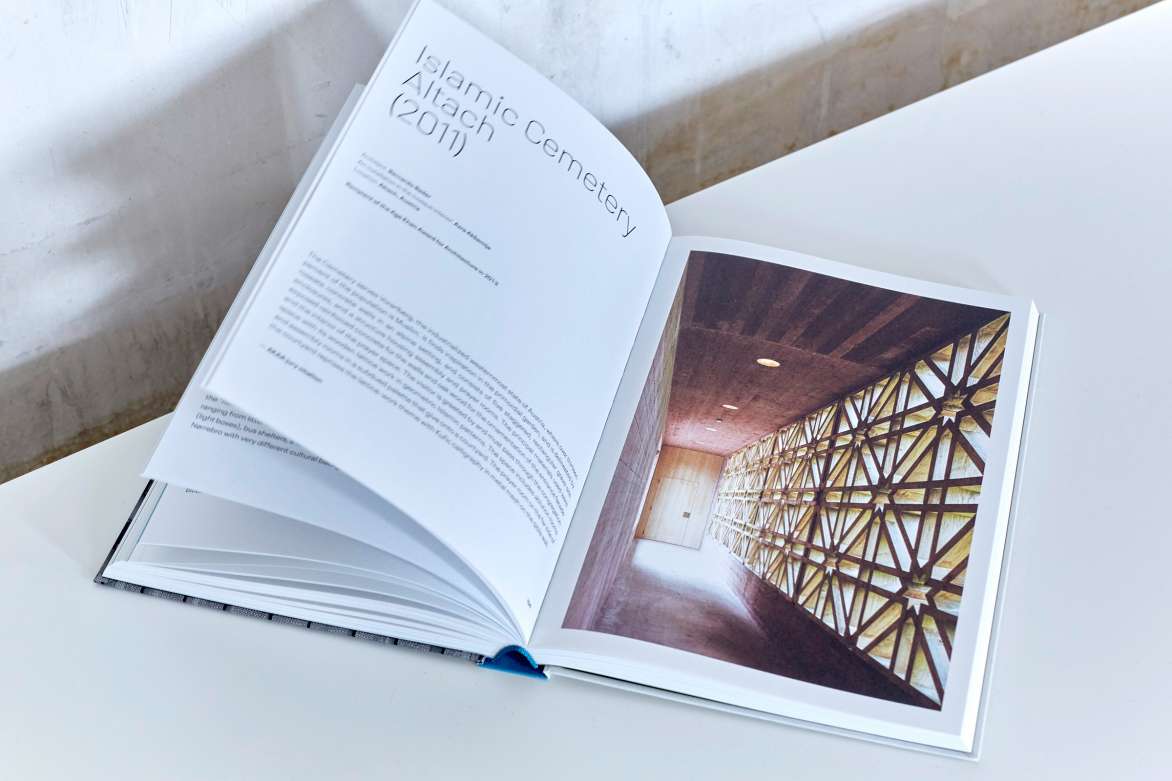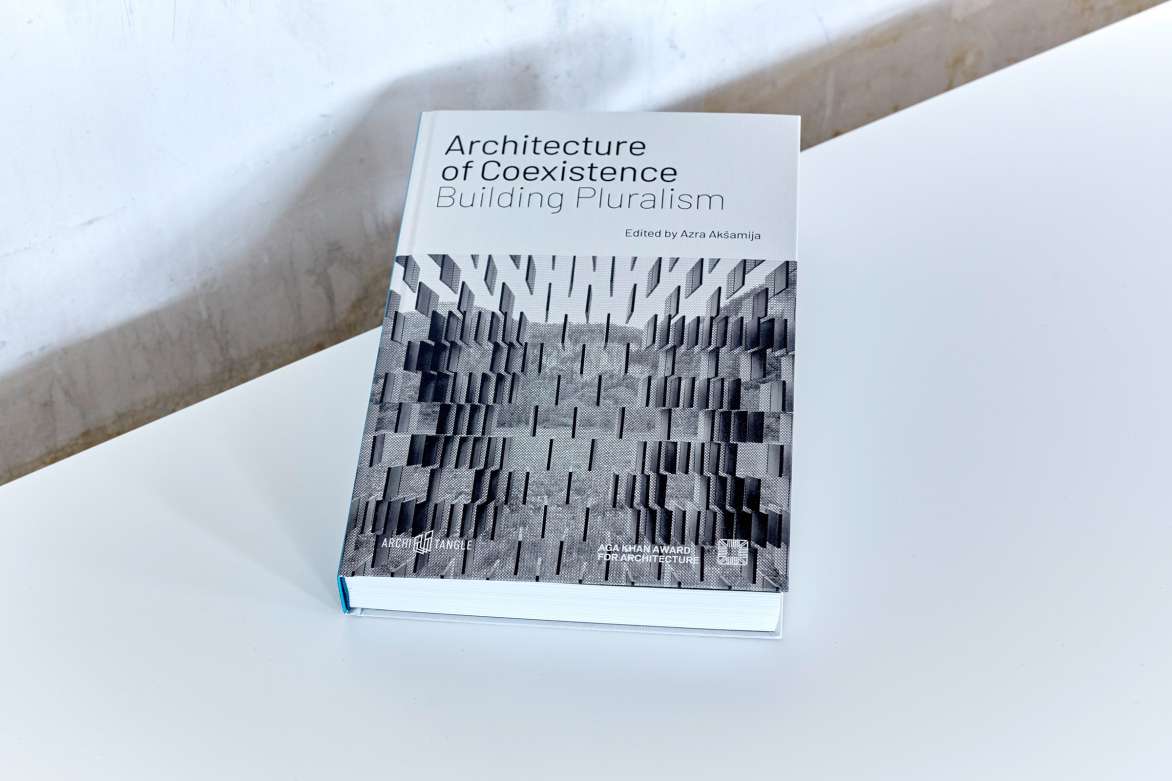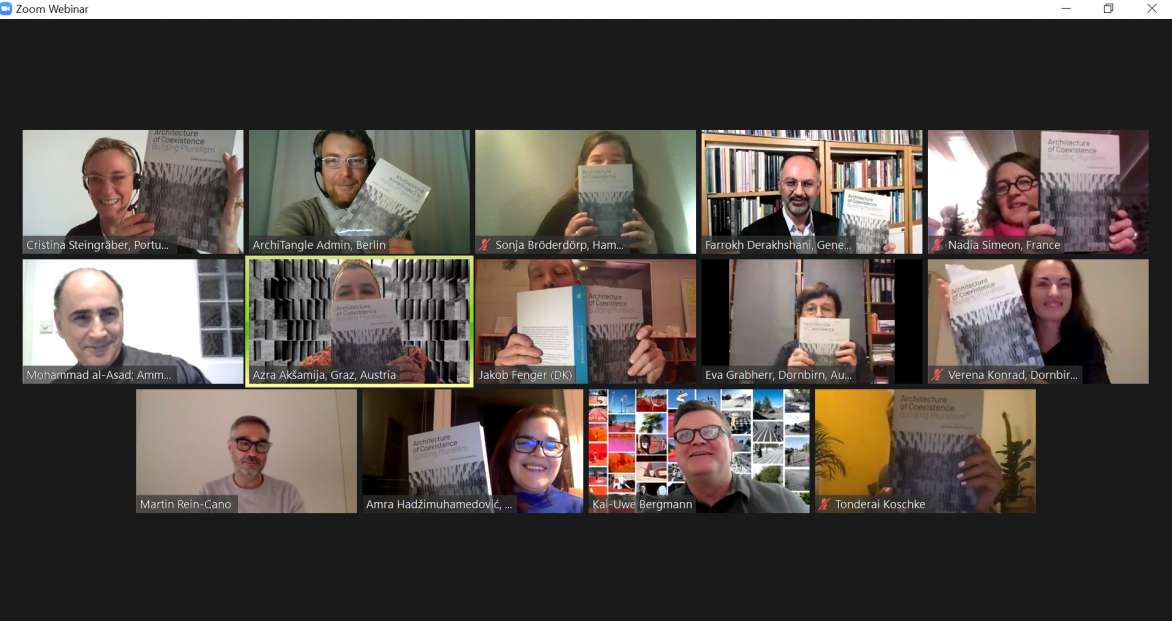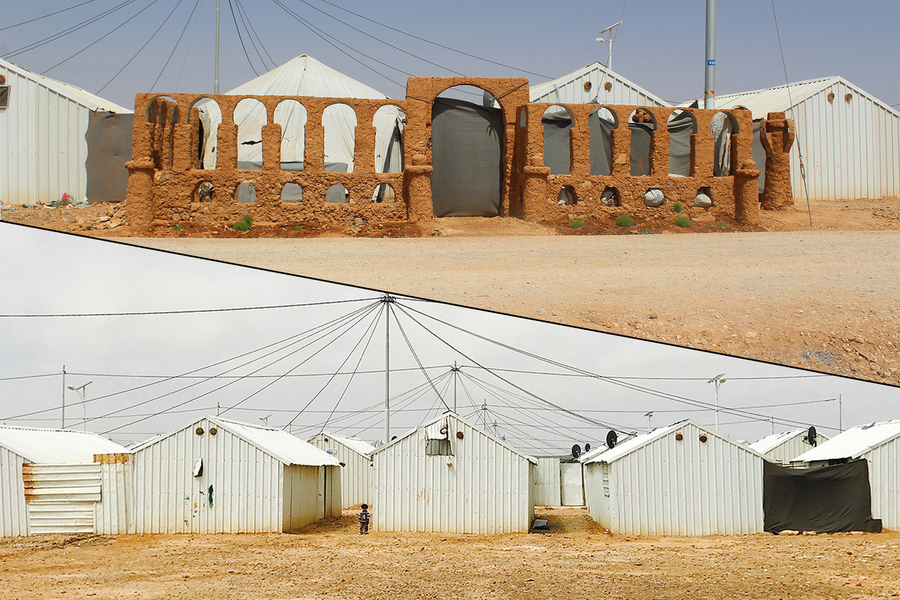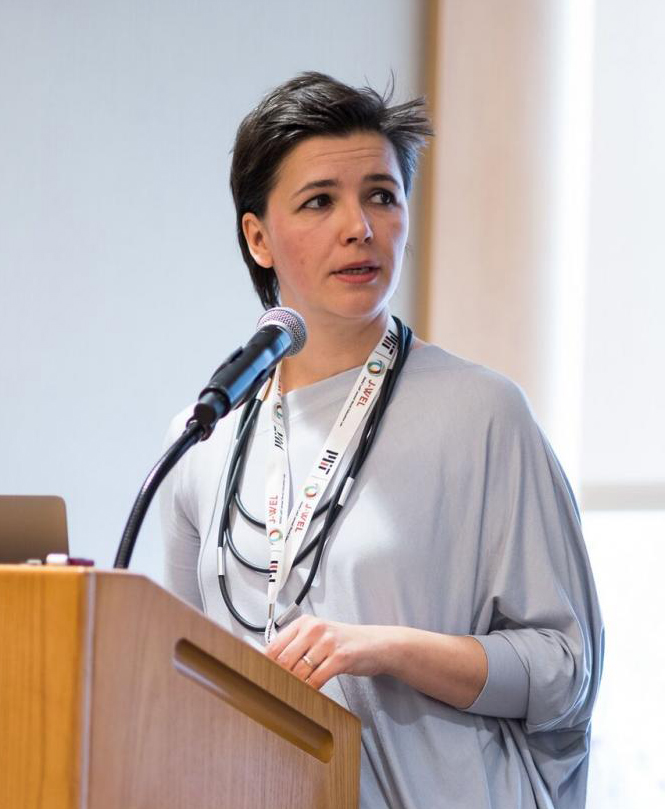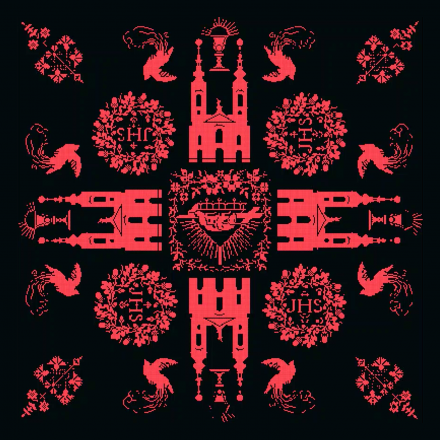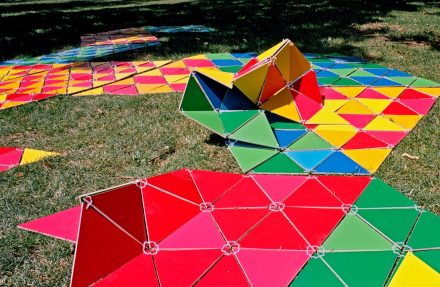The Architecture of Coexistence book launch brought together ten panelists from all around the world, including Azra Akšamija, the editor of this volume. Cristina Steingräber moderated the event, which seamlessly integrated addresses by the different panelists, films depicting the projects presented in the book, and a discussion during which time ran out before the questions did.
Watch here!
Architecture of Coexistence: Building Pluralism investigates how architecture can shape an open-minded and inclusive society, highlighting three internationally renowned projects: the White Mosque in Visoko, Bosnia-Herzegovina (1980); the Islamic Cemetery Altach, Austria (2012); and Superkilen park in Copenhagen, Denmark (2011).
Scholarly essays across various disciplines, along with interviews with the architects and users of these projects, provide intriguing insights into architecture’s ability to bridge cultural divides. Soliciting a wide array of questions about migration, transculturalism, visibility, inclusion, and exclusion, the book sheds light on the long-term social processes generated between architectural form and its users.
Architecture of Coexistence offers a truly interdisciplinary perspective on a very timely subject: “Building pluralism” means designing for a respectful inclusion of different cultural needs, practices, and traditions.
With contributions by Azra Akšamija, Mohammad al-Asad, Ali S. Asani, Simon Burtscher-Matis, Amila Buturović, Farrokh Derakhshani, Robert Fabach, Eva Grabherr, Amra Hadžimuhamedović, Tina Gudrun Jensen, Jennifer Mack, Nasser Rabbat, Barbara Steiner, Helen Walasek, and Wolfgang Welsch. Photo essays by Velibor Božović, Cemal Emden, Jesper Lambaek, and Nikolaus Walter. ______________________________________________________________________________
Book Review from BauNetz:
Far too seldom does architecture criticism take the time to visit a building several years later and check whether it is functioning according to its original intentions. Fortunately, the book Architecture of Coexistence: Building Pluralism by Azra Akšamija, which was developed in cooperation with and financed by the Aga Khan Award, does exactly that: It discusses three projects that were awarded the Aga Khan Award shortly after completion, the yes, looks specifically at designs that were built for or by Muslim communities. For Architecture of Coexistence these projects should be presented again and examined how well or badly they have aged. First of all, this is basically an approach that many other prizes that will be awarded shortly after completion would also be desired.
The choice fell on three projects in Europe, because the book revolves around the question of the extent to which architecture and urban planning can support the formation of an open, inclusive and tolerant society. The three projects are as different as they are logical: The White Mosque in Visoko (Bosnia-Herzegovina) from 1980, the Islamic Cemetery in Altach, Austria from 2011 and the inner-city park Superkilenin Copenhagen in 2012. These are projects in societies that either have no or, in the case of Bosnia-Herzegovina, a very specific Muslim history. And all three are societies that have been experiencing strong, including Muslim immigration for several decades.
Read full review here.

